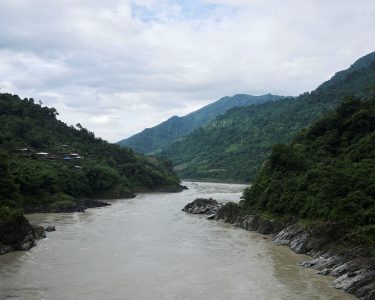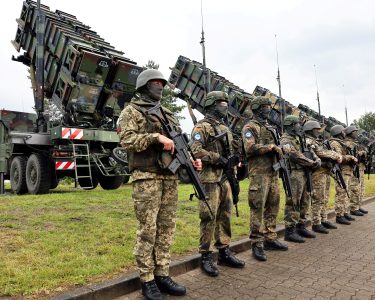Summary
- Syrian army says Assad rule has ended.
- Assad boards plane, leaves Damascus, say senior army officers.
- Assad’s destination unknown, officers say.
- Rebels enter Damascus.
- Thousands celebrate “Freedom” in Damascus.
AMMAN/BEIRUT/CAIRO, Dec 8 (AfrikTimes) – Syria’s army command notified officers on Sunday that President Bashar al-Assad’s 24-year authoritarian rule had ended, a Syrian officer who was informed of the move told reporters, following a rapid rebel offensive that took the world by surprise.
Syrian rebels, who claimed that Damascus is ‘now free of Assad,’ are expected to broadcast their first address to the Syrian people on state television, according to two rebel sources. Assad, who had crushed all forms of dissent, flew out of Damascus to an unknown destination earlier on Sunday, confirmed two senior army officers. Rebel forces stated that they had entered the capital with no sign of army deployments.
Thousands, both in cars and on foot, gathered in a main square in Damascus, waving and chanting ‘Freedom’ to mark the end of half a century of Assad family rule, witnesses said. The dramatic collapse marks a seismic moment for the Middle East, ending the family’s iron-fisted rule over Syria and dealing a massive blow to Russia and Iran, which have lost a key ally at the heart of the region.
 Rebel fighters gather in Homs after Syria’s army command notified officers on Sunday that President Bashar al-Assad’s 24-year authoritarian rule has ended, a Syrian officer who was informed of the move told reporters, following a rapid rebel offensive that took the world by surprise, in Homs, Syria December 8, 2024.
Rebel fighters gather in Homs after Syria’s army command notified officers on Sunday that President Bashar al-Assad’s 24-year authoritarian rule has ended, a Syrian officer who was informed of the move told reporters, following a rapid rebel offensive that took the world by surprise, in Homs, Syria December 8, 2024.
“We celebrate with the Syrian people the news of freeing our prisoners, breaking their chains, and announcing the end of the era of injustice in Sednaya prison,” the rebels said, referring to a large military prison on the outskirts of Damascus where the Syrian government detained thousands.
A Syrian Air plane took off from Damascus airport around the time the capital was reported to have been taken by rebels, according to data from the Flightradar website. The aircraft initially flew towards Syria’s coastal region, a stronghold of Assad’s Alawite sect, but then made an abrupt U-turn and flew in the opposite direction for a few minutes before disappearing off the map. The identities of those onboard remain unknown.
The head of Syria’s main opposition group abroad, Hadi al-Bahra Syrian, declared Damascus was now “without Bashar al-Assad”. As Syrians expressed joy, Prime Minister Mohammad Ghazi al-Jalali said he was ready to support the continuity of governance and prepared to cooperate with any leadership chosen by the Syrian people.
U.S. President Joe Biden and his team were monitoring the ‘extraordinary events in Syria’ and were in contact with regional partners, the White House said. The frontlines of Syria’s complex civil war had been dormant for years, until Islamists once affiliated with Al Qaeda suddenly burst into action, posing the biggest challenge to Assad, who had survived years of grueling war and international isolation with the help of Russia, Iran, and Lebanon’s Hezbollah. But Assad’s allies were focused on, and weakened by, other crises, leaving Assad at the mercy of his opponents with an army that was not prepared to defend him.
 People gather at Saadallah al-Jabiri Square as they celebrate, after Syria’s army command notified officers on Sunday that President Bashar al-Assad’s 24-year authoritarian rule has ended, a Syrian officer who was informed of the move told reporters, following a rapid rebel offensive that took the world by surprise, in Aleppo, Syria December 8, 2024.
People gather at Saadallah al-Jabiri Square as they celebrate, after Syria’s army command notified officers on Sunday that President Bashar al-Assad’s 24-year authoritarian rule has ended, a Syrian officer who was informed of the move told reporters, following a rapid rebel offensive that took the world by surprise, in Aleppo, Syria December 8, 2024.
Rebel leader Ahmed al-Sharaa urged the public to avoid state institutions, which will remain under interim oversight by the “former prime minister” until formal handover procedures are established.
Israel, which has severely weakened the Iran-backed groups Hezbollah in Lebanon and Hamas in Gaza, will likely celebrate the fall of Assad, another of Iran’s key regional allies. But the prospects of an Islamist group ruling Syria will likely raise concerns.
Just hours before reaching Damascus, rebels announced they had gained full control of the key city of Homs after only a day of fighting, leaving Assad’s 24-year rule hanging by a thread. Thousands of Homs residents poured into the streets after the army withdrew from the central city, dancing and chanting ‘Assad is gone, Homs is free’ and ‘Long live Syria, down with Bashar al-Assad'”.
Rebels fired celebratory gunshots into the air as jubilant youths tore down posters of Syrian President Bashar al-Assad, whose territorial control has collapsed in a dizzying week-long retreat by the military.
 Rebel fighters gather in Homs after Syria’s army command notified officers on Sunday that President Bashar al-Assad’s 24-year authoritarian rule has ended, a Syrian officer who was informed of the move told reporters, following a rapid rebel offensive that took the world by surprise, in Homs, Syria December 8, 2024.
Rebel fighters gather in Homs after Syria’s army command notified officers on Sunday that President Bashar al-Assad’s 24-year authoritarian rule has ended, a Syrian officer who was informed of the move told reporters, following a rapid rebel offensive that took the world by surprise, in Homs, Syria December 8, 2024.
The fall of Homs gave the insurgents control over Syria’s strategic heartland and a key highway crossroads, severing Damascus from the coastal region that is the stronghold of Assad’s Alawite sect and where his Russian allies have a naval base and air base.
Homs’ capture is also a powerful symbol of the rebel movement’s dramatic comeback in the 13-year-old conflict. Swathes of Homs were destroyed by grueling siege warfare between the rebels and the army years ago. The fighting ground down the insurgents, who were forced out. Hayat Tahrir al-Sham commander Abu Mohammed al-Golani, the main rebel leader, called the capture of Homs a historic moment and urged fighters not to harm “those who drop their arms”.
Rebels freed thousands of detainees from the city prison. Security forces left in haste after burning their sensitive documents. Rebel commander Hassan Abdul Ghani said in a statement early Sunday that operations were ongoing to “completely liberate” the countryside around Damascus, with rebel forces turning their focus toward the capital.
 Members of the Kurdish-led Syrian Democratic Forces (SDF) gesture in Deir al-Zor, after U.S.-backed alliance led by Syrian Kurdish fighters captured Deir el-Zor, the government’s main foothold in the vast desert, according to Syrian sources, in Syria December 7, 2024. REUTERS/Orhan Qereman.
Members of the Kurdish-led Syrian Democratic Forces (SDF) gesture in Deir al-Zor, after U.S.-backed alliance led by Syrian Kurdish fighters captured Deir el-Zor, the government’s main foothold in the vast desert, according to Syrian sources, in Syria December 7, 2024. REUTERS/Orhan Qereman.
In one Damascus suburb, a statue of Assad’s father, the late President Hafez al-Assad, was toppled and destroyed, symbolizing the end of decades of family rule. Meanwhile, rebels swiftly expanded control across Syria’s southwest in just 24 hours.
AN EXISTENTIAL THREAT TO ASSAD’S RULE
The pace of events has stunned Arab capitals and raised fears of a new wave of regional instability. Qatar, Saudi Arabia, Jordan, Egypt, Iraq, Iran, Turkey and Russia issued a joint statement saying the crisis was a dangerous development and calling for a political solution.
Syria’s civil war, which began in 2011 as an uprising against Assad’s authoritarian rule, has drawn in major global powers, created a breeding ground for jihadist militants, and displaced millions of refugees into neighboring countries.
 A drone view of Al-Rastan bridge in Homs countryside, after Syrian rebels pressed their lightning advance on Saturday, saying they had seized most of the south, as government forces dug in to defend the key central city of Homs to try to save President Bashar al-Assad’s 24-year rule, in Syria December 7, 2024.
A drone view of Al-Rastan bridge in Homs countryside, after Syrian rebels pressed their lightning advance on Saturday, saying they had seized most of the south, as government forces dug in to defend the key central city of Homs to try to save President Bashar al-Assad’s 24-year rule, in Syria December 7, 2024.
Hayat Tahrir al-Sham (HTS), now the strongest rebel faction, emerged from al-Qaeda’s Syrian affiliate and remains classified as a terrorist organization by the U.S. and others. Many Syrians fear its rule could impose strict Islamist policies. However, Golani has sought to ease concerns, assuring minorities of their safety and pledging to avoid Islamist attacks abroad. Notably, in Aleppo, captured by rebels a week earlier, there have been no reports of retaliatory actions.
When asked on Saturday whether he believed Golani, Russian Foreign Minister Sergei Lavrov replied, “The proof of the pudding is in the eating”.
 A drone view shows inside Hama’s military airport, after Syrian rebels battled government forces for control of the key city of Homs on Saturday and advanced towards the capital Damascus as front lines collapsed across the country, throwing President Bashar al-Assad’s rule into the balance, in Hama, Syria December 7, 2024.
A drone view shows inside Hama’s military airport, after Syrian rebels battled government forces for control of the key city of Homs on Saturday and advanced towards the capital Damascus as front lines collapsed across the country, throwing President Bashar al-Assad’s rule into the balance, in Hama, Syria December 7, 2024.
ALLIES’ ROLE IN SUPPORTING ASSAD
Assad’s regime heavily relied on allies such as Russia and Iran to suppress the rebellion. Russian airstrikes supported Syrian military operations, while Iran deployed allied forces, including Hezbollah and Iraqi militias, to reinforce Assad’s troops and assault rebel strongholds.
However, Russia’s focus has shifted to its ongoing military operations in Ukraine, while Hezbollah’s heavy losses in its war with Israel have weakened its ability to assist Assad. Similarly, Iran, stretched thin, has found it increasingly difficult to sustain its military support for the Syrian leader.
Meanwhile, U.S. President-elect Donald Trump has signaled a hands-off approach, stating that the U.S. should avoid involvement in Syria’s internal conflict and “let it play out.”




 A drone view shows helicopter that belonged to forces loyal to Bashar al-Assad government at Hama’s military airport, after Syrian rebels battled government forces for control of the key city of Homs on Saturday and advanced towards the capital Damascus as front lines collapsed across the country, throwing President Bashar al-Assad’s rule into the balance, in Hama, Syria December 7, 2024.
A drone view shows helicopter that belonged to forces loyal to Bashar al-Assad government at Hama’s military airport, after Syrian rebels battled government forces for control of the key city of Homs on Saturday and advanced towards the capital Damascus as front lines collapsed across the country, throwing President Bashar al-Assad’s rule into the balance, in Hama, Syria December 7, 2024.


